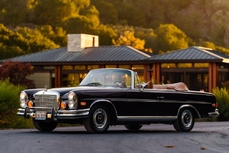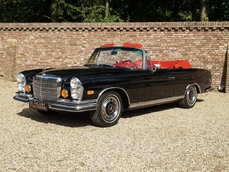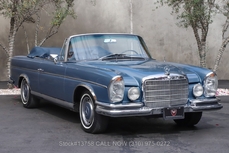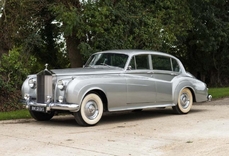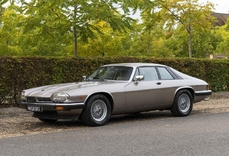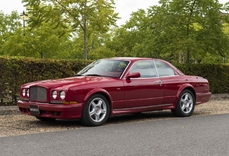Mercedes-Benz 280SE Cabriolet w111 1970
General description :
An original factory built 1 of just 68 RHD
Last of the line ‘Sindelfingen’ hand-built cars
Fitted with the highly desirable, floor change automatic gearbox
Formerly registered in Hong Kong
Fitted with inertia seat belts and Retro Sound radio with iPod connection
Long term ownership spanning two decades
1970 Mercedes-Benz 280SE 3.5 Cabriolet For Sale In London (RHD)
An opportunity to acquire one of the last hand-built and rare, top of the line Mercedes-Benz V8 Cabriolets
Finished in the timeless colour combination of Arctic White coachwork with Nero Black hide, matching carpets and mohair soft top. This particular example is 1 of 68 factory-built right-hand drive cars and fitted with the highly desirable floor change gearbox. According to the chassis records the car was delivered new to Malta where it was first registered to Admiralty house on the island and resided there until 1974 when it returned back to the United Kingdom. Having been acquired by its current owner in some 24 years ago, the Big Benz was shipped off to British Hong Kong where the car was registered, when Britain agreed to transfer the colony to the Chinese in 1997 the car was shipped back to the UK where over the past two decades this very special car has been used as holiday car and kept in state of on the button readiness. During this ownership the car has been meticulously maintained, the most recent works to be completed consist of complete trimming of the seats, door cards, the top role of the dash all in the correct leather. New carpets and fitment of inertia seat belts with classic webbing and chrome fittings, additionally all the woodwork has been re-veneered and a modern retro looking DAB radio with blue tooth connection has also been fitted at huge expense with all works carried out by international renowned craftsman.
“I used to refer to Mercedes Benz as the Worlds best, which got me into trouble with those who were born with a silver lady on their radiator caps. The latest Mercedes had eluded me for far too long, but the other day Erik Johnson of Mercedes Benz (GB) telephoned to suggest that I should try the new 280SE 3.5 cabriolets. I did the trip from Brussels to Monaco in one day, actually starting as late as 11 pm. It felt strange speeding down the Autoroute at 110mph with no noise coming from the engine or road and the air conditioning keeping the temperature inside the car perfect. On reaching Monte, one impression of the Silver Shadow was dominant. I was fresh, relaxed and not in the least tired-a remarkable tribute to car after having driven 700 miles. The drive from Monaco across the Alps to Turin is a punishing test for any cars handling. but the big 3.5 came through with flying colours. The car really inspires confidence not only because it behaves safely but also because I know it has been properly put together and won’t let me down. On the question of safety, I will just say that if ever I am unfortunate enough to have an accident, the 280se 3.5 is one of the few cars I would like to have it in!!” Willy Bond MBE, leading motoring journalist and editor of Motor Sport magazine from 1936 1991 . after having road tested a Mercedes Benz 280SE 3.5 Cabriolet for over 2000 fast miles under conditions varying from the Autoroute and pave of France to Alpine hairpins.
Introduced in late 1969 as a prestige model to supplant the somewhat underpowered six-cylinder 280SE, the V8-powered, W111-Series 280SE 3.5 in both coupe and convertible form was of immediate appeal to wealthy customers who were accustomed to having the best quality and workmanship available in an automobile, but didn’t need or desire the next step up, the over-the-top 600.
The hand-built body of the new model was slightly restyled, with a cleaner and flatter nose and radiator shell, but was still quite conservative. Beneath the wide hood there now rested a Bosch fuel-injected, 200bhp overhead-cam V8 with 211 foot-pounds of torque designed to deliver excellent performance. One reviewer referred to it as having a “hot-rod”- like persona with a lovely exhaust snarl – while meeting ever-more strict emissions laws in the US, the company’s most vital market.
The compact but sturdy engine was capable of moving this big 4/5-seater to 100 kilometres per hour in under 10 seconds and offered a top speed in excess of 200km/h, a substantial improvement on the six-cylinder version’s figures. Large vacuum-assisted disc brakes at each corner allowed the driver to slow with ease, and handling was described as very comfortable, thanks to its coil-sprung independent suspension.
The craftsmen at Sindelfingen produced just 4,502 of this 3.5 V8 were built worldwide of which 3,270 were coupes and 1,232 where cabriolets with 802 cabriolets alone built for the USA market leaving the balance of 430 cars divided between the rest of the world. This example is just 1 of 68 RHD cars making it one of the rarest in this iconic series. Both the open and closed versions of the 3.5 were fitted with just about every luxury amenity a buyer could ask for. The few choices remaining pertained to paint and interior trim colours and which model of Becker stereo system was desired. It all added up to an impressively costly automobile. Significantly, the 280SE 3.5 was to be the final model to feature this long-established and much-admired body style, and today these last-of-the-line classics are highly sought after by discerning Mercedes-Benz collectors.
Almost indistinguishable from the 280SE, because of the new 3.5-litre V8 engine it is in a completely different class. This is a wonderful opportunity to acquire one of the elegant styles cabriolets with impeccable provenance to match.
Ready for immediate viewing at DD Classics Dealership in London, please call 0208 878 3355 for more information.
https://ddclassics.com/car-listing/1970-mercedes-benz-280se-3-5-cabriolet/
1970 Mercedes-Benz 280SE Cabriolet w111 is listed sold on ClassicDigest in Surrey by DD Classics for £249950.
Car Facts
Car type : Car Make : Mercedes-Benz Model : 280SE Cabriolet w111 Engine size : 3.5 Model Year : 1970 Sub type : Convertible Location : Surrey
Sold
Seller Information
Sold
People who viewed this Mercedes-Benz 280SE Cabriolet w111 also viewed similar Mercedes-Benz listed at ClassicDigest
Other cars listed for sale by this dealer
About Mercedes-Benz
In the annals of automotive history, the journey of Mercedes-Benz is a tale that unfolds with the ingenuity of its founding pioneers. In the year 1886, Karl Benz crafted the Benz Patent Motorwagen, a creation that would go down in history as the world's inaugural automobile. Unbeknownst to him, this moment marked the genesis of what would evolve into the most illustrious premium car manufacturer globally. The financial underpinning of this pioneering venture, interestingly, was provided by Karl Benz's wife, Bertha Benz, demonstrating a remarkable partnership that would set the tone for Mercedes-Benz's legacy.A parallel narrative emerged not far away, as Daimler-Motoren-Gesellschaft, founded by Gottlieb Daimler and Wilhelm Maybach, entered the scene. In 1901, they unveiled their automobile under the now-famous moniker "Mercedes," meaning "godsend" in Spanish. This name was bestowed upon the car at the behest of Emil Jellinek's daughter, the distributor for Daimler-Motoren-Gesellschaft. The wheels of innovation were set in motion.
Fast forward to 1926, a pivotal year that witnessed the merger of Daimler with Benz & Cie., culminating in the birth of Daimler-Benz. The amalgamation saw the adoption of "Mercedes-Benz" as the distinguished trademark for their automobiles, fusing the legacies of two visionary entities into one.
Contrary to perceptions of conservatism, the trajectory of Daimler-Benz unfolds as a chronicle of industry firsts. From the introduction of the honeycomb radiator to the float carburetor, and the pioneering implementation of four-wheel brakes in 1924, Daimler-Benz consistently pushed the boundaries of automotive innovation. The diesel-powered Mercedes-Benz 260 D in 1936 marked the inception of diesel engines in passenger cars. The iconic Mercedes-Benz 300SL Gullwing made history as the first car with direct fuel injection, albeit the Gutbrod's tiny 2-stroke engine can claim precedence.
Safety innovations became a hallmark, with Béla Barényi's patented safety cell design in the "Ponton"-models in 1951, featuring front and rear crumple zones. The W116 450SEL 6.9 saw the introduction of the Anti-Lock Brake system (ABS), another pioneering safety feature. From the first production airbags and beyond, the legacy of "firsts" continued to be etched into the fabric of Daimler-Benz.
Over its centennial journey, Mercedes-Benz has not merely produced cars but has sculpted automotive icons. The SSKL, 710 SSK Trossi Roadster, 770K Grosser, 540K Spezial Roadster, 300SL Gullwing, w100 600 Pullman, w111 280SE 3.5 Flachkühler, w113 230SL Pagoda, w109 300 SEL 6.3, and w201 2.3-16 Cosworth stand testament to the brand's commitment to engineering excellence.
The roaring Silver Arrows, or "Silberpfeile," including the W 25, W 125, W154, W165, and W196, created a legacy of dominance on the racetrack. These machines were not merely cars; they were expressions of precision, speed, and an indomitable spirit that left their competitors in the dust.
As Mercedes-Benz marches into the future, it does so not just as an automaker but as a custodian of a legacy, a torchbearer of innovation, and a beacon of automotive excellence. The road ahead is sure to witness the continued fusion of cutting-edge technology, timeless design, and an unwavering commitment to setting new standards in the world of automobiles.
One luminary figure who left an indelible mark was Béla Barényi, often heralded as the "father of passive safety" for his pioneering work in safety engineering. His patented safety cell design, featuring front and rear crumple zones, became a hallmark of Mercedes-Benz's commitment to occupant safety, setting new standards that reverberated throughout the automotive world.
Moving through the chronicles, the collaborative genius of Wilhelm Maybach, alongside Gottlieb Daimler, laid the foundation for Daimler-Motoren-Gesellschaft. Their innovations not only birthed the first Mercedes but established a culture of relentless pursuit of technological excellence that remains integral to Mercedes-Benz's DNA.
In the post-merger era of 1926, Ferdinand Porsche emerged as a prominent figure within Mercedes-Benz. His work on the Mercedes-Benz S-Type, a supercharged race car, garnered acclaim and set the stage for a legacy that extended far beyond the marque. Porsche's impact would later extend to his eponymous company, but his influence at Mercedes-Benz during those formative years was pivotal.
As the 20th century progressed, the legendary Rudolf Uhlenhaut emerged as a key figure. Uhlenhaut, an accomplished engineer and the driving force behind the iconic Silver Arrows, played a crucial role in Mercedes-Benz's dominance in motorsports. His engineering prowess and attention to detail were instrumental in creating some of the most formidable racing cars of the era.
In the latter half of the century, figures like Bruno Sacco, the head of design at Mercedes-Benz from 1975 to 1999, left an indelible imprint on the brand's aesthetic identity. Sacco's design philosophy, characterized by clean lines and timeless elegance, shaped iconic models like the W126 S-Class and the W201 190E, solidifying Mercedes-Benz's reputation for luxury and sophistication.
The narrative would be incomplete without acknowledging the contributions of engineers like Hans Scherenberg, whose leadership in the 1970s ushered in a new era of technological innovation at Mercedes-Benz. Scherenberg's tenure saw the development of groundbreaking technologies, including the Anti-Lock Brake system (ABS) and the introduction of airbags in production cars.



